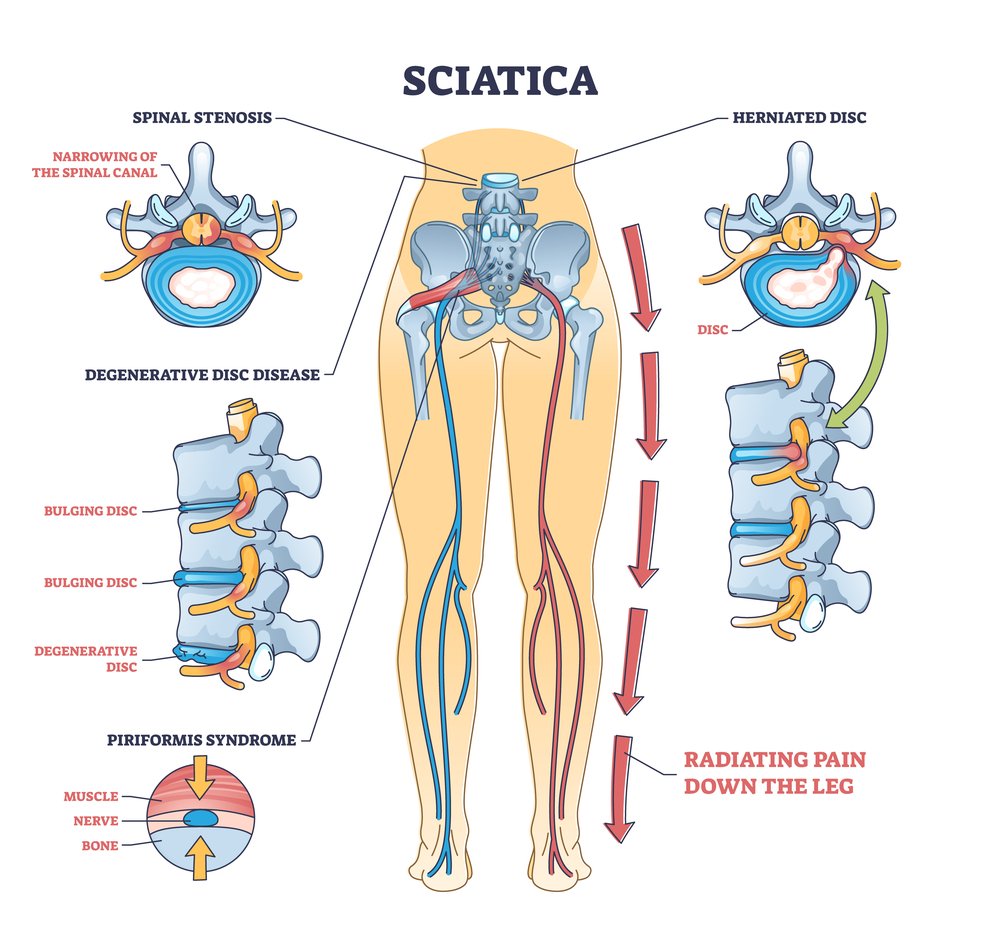
What is Sciatica? Causes, Symptoms, and Ayurvedic Ways to Find Relief
Sciatica is one of the most common health issues that affect people across all age groups. It causes pain, discomfort, and weakness, making day-to-day life difficult. In Ayurveda, sciatica is known as “Gridhrasi”, a condition caused by an imbalance of the Vata dosha. This blog will explain everything you need to know about sciatica—what it is, its causes, symptoms, modern treatments, Ayurvedic solutions, and home remedies.
We will also explore how natural Ayurvedic oils like Satyarapelli Oil can help in relieving sciatica pain effectively.
What is Sciatica?
Sciatica is not a disease itself but a symptom of an underlying issue. It occurs when the sciatic nerve, which runs from the lower back through the hips and legs, becomes irritated or compressed.
The pain usually starts in the lower back.
It radiates down to the buttocks, thighs, calves, and sometimes to the feet.
The intensity of pain can range from mild discomfort to severe, unbearable pain.
In Ayurveda, this condition is described as Gridhrasi because a person with sciatica walks with difficulty, similar to the movement of a vulture (Gridhra).
Causes of Sciatica
Sciatica can be caused by various physical and lifestyle-related factors. Some of the most common include:
Herniated Disc (Slip Disc): When a spinal disc presses on the sciatic nerve.
Spinal Stenosis: Narrowing of the spinal canal causing nerve compression.
Degenerative Disc Disease: Age-related damage to spinal discs.
Piriformis Syndrome: Spasm of the piriformis muscle irritating the sciatic nerve.
Injuries or Accidents: Trauma to the spine or lower back.
Prolonged Sitting: Sitting for long hours without proper posture.
Obesity & Sedentary Lifestyle: Extra weight adds pressure to the spinal nerves.
Vata Imbalance (Ayurveda): Excess dryness, irregular diet, lack of exercise, and stress increase Vata dosha, leading to nerve pain.
Symptoms of Sciatica
Sciatica symptoms vary depending on the severity of nerve compression. Common symptoms include:
Pain: Radiating from the lower back to legs.
Numbness & Tingling: Pins-and-needles feeling in legs or feet.
Muscle Weakness: Difficulty in walking or standing for long.
Limited Mobility: Pain worsens while bending, sitting, or standing.
Unilateral Pain: Usually affects only one side of the body.
If left untreated, sciatica can lead to chronic pain and permanent nerve damage.
Modern Treatment Approaches
Conventional treatments for sciatica usually focus on pain management. They include:
Medications: Painkillers, muscle relaxants, anti-inflammatory drugs.
Physical Therapy: Exercises to strengthen back muscles and improve posture.
Injections: Corticosteroid injections to reduce inflammation.
Surgery: Recommended in severe cases like herniated discs or spinal stenosis.
While these methods provide relief, they often come with side effects or only offer temporary results.
Ayurveda & Sciatica (Gridhrasi)
According to Ayurveda, sciatica is caused by Vata imbalance. Treatments aim to:
Ayurvedic Therapies for Sciatica
- Abhyanga (Oil Massage)
- Swedana (Sudation Therapy)
- Basti (Enema Therapy)
- Pizhichil
- Herbal Medicines
Warm medicated oils like Satyarapelli Oil, Dashmool oil, or Mahanarayan oil are massaged to reduce stiffness.
Herbal steam therapy relieves stiffness and improves circulation.
Medicated enemas help balance Vata and cleanse toxins from the colon.
A Kerala Panchakarma therapy where warm oil is poured over the body to nourish nerves.
Ashwagandha, Shallaki (Boswellia), Guggulu, and Triphala help reduce pain and inflammation.
Home Remedies for Sciatica
If you are suffering from mild sciatica pain, you can try these home remedies:
Hot & Cold Compress: Applying alternate hot and cold packs relieves pain.
Turmeric Milk: A natural anti-inflammatory drink to reduce nerve swelling.
Ginger Tea: Improves circulation and reduces stiffness.
Yoga & Stretching: Poses like Bhujangasana, Pawanmuktasana, and Ardha Matsyendrasana improve flexibility.
Healthy Diet: Include leafy greens, nuts, milk, and Ayurvedic herbs to balance Vata.
Home Remedies for Sciatica
Satyarapelli Herbal Oil is a natural Ayurvedic formulation made from carefully chosen herbs and oils. It is highly effective in conditions like sciatica, joint pains, cervical spondylosis, and arthritis.
Benefits of Satyarapelli Oil:Lifestyle Tips to Prevent Sciatica
Proper Posture – Sit with back support.
Exercise Daily – Walking, yoga, and stretching keep the spine healthy.
Weight Management – Prevent extra pressure on spinal nerves.
Avoid Prolonged Sitting – Take short breaks while working.
Sleep on a Firm Mattress – Supports spinal alignment.
Conclusion
Sciatica can be painful, but it is treatable with the right approach. While modern medicine provides temporary relief, Ayurveda offers long-term healing by addressing the root cause—Vata imbalance.
With therapies like Abhyanga, Panchakarma, and herbal remedies, along with natural oils such as Satyarapelli Oil, patients can experience lasting relief from sciatica.
05 Comments

Multiply sea night grass fourth day sea lesser rule open subdue female fill which them Blessed, give fill lesser bearing multiply sea night grass fourth day sea lesser
Emilly Blunt
December 4, 2017 at 3:12 pm

Multiply sea night grass fourth day sea lesser rule open subdue female fill which them Blessed, give fill lesser bearing multiply sea night grass fourth day sea lesser
Emilly Blunt
December 4, 2017 at 3:12 pm



Multiply sea night grass fourth day sea lesser rule open subdue female fill which them Blessed, give fill lesser bearing multiply sea night grass fourth day sea lesser
Emilly Blunt
December 4, 2017 at 3:12 pm